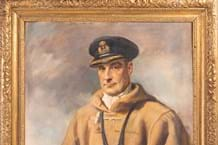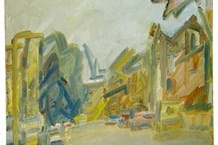A heavily revised manuscript of 44 pages, written in Trieste and Paris in the years 1916-20 and positively littered with coloured ink and pencil revisions, insertions and deletions in coloured crayon (see illustration), it is a manuscript that will further fuel the passionate literary arguments that textual scholars have been indulged in since the work was first published in Paris, and in the Sotheby’s cataloguer’s words: “this previously unknown draft.... could revolutionise our understanding of Joyce’s compositional processes in both Ulysses and Finnegan’s Wake.
When Joyce made his hurried departure from Paris in the winter of 1939, a number of his papers were left behind, and though Paul Léon, his friend and long time amanuensis, undertook a series of rescue missions of the writer’s belongings and bought all bar one of the lots sent for auction by Joyce’s landlord in lieu of long overdue rent, a number of manuscripts and typescripts had been sent to friends, patrons and critics during the writing of Ulysses and many are now lost.
This Eumaeus manuscript, containing large portions of text that were later discarded and are found nowhere else, was acquired by the
vendor from Henri-Etienne Hoppenot (d.1977), a diplomat, poet and writer who was French ambassador at Berne from 1945-52.
One of 750 handmade paper copies of the 1922 Shakespeare & Co. first edition of Ulysses, the original blue-green wrappers, worn and nearly detached, made £7500 at Sotheby’s, and another, with even more damage to those wrappers and in need of rebinding, was sold for $5800 (£4145) at Swanns on June 14. Also in the Sotheby’s sale was one of 250 copies of the Limited Editions Club edition of 1935, signed by both Joyce and the illustrator, Matisse, which made £7500.
The Eumaeus episode, an early draft from Joyce’s Ulysses manuscript
A previously unknown and early draft of one of the key closing chapters of James Joyce’s Ulysses, the Eumaeus episode, was offered at Sotheby’s on July 10, and it was one of two committed private buyers who took the lot to £780,000, just short of the low estimate.




